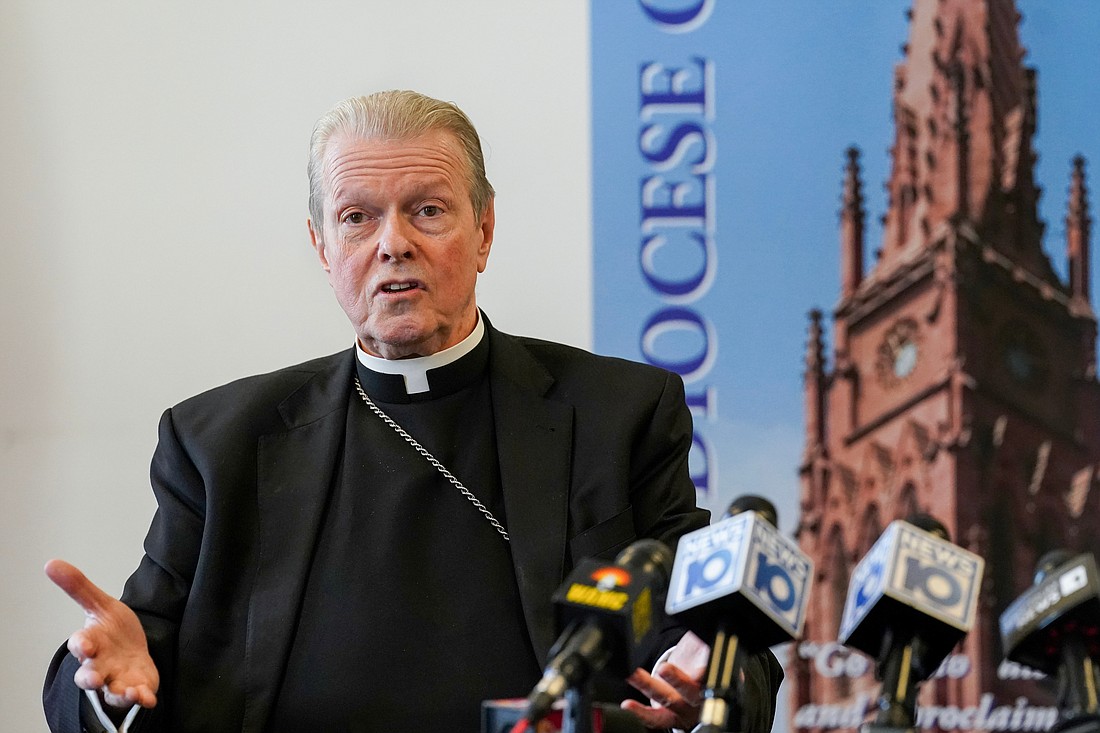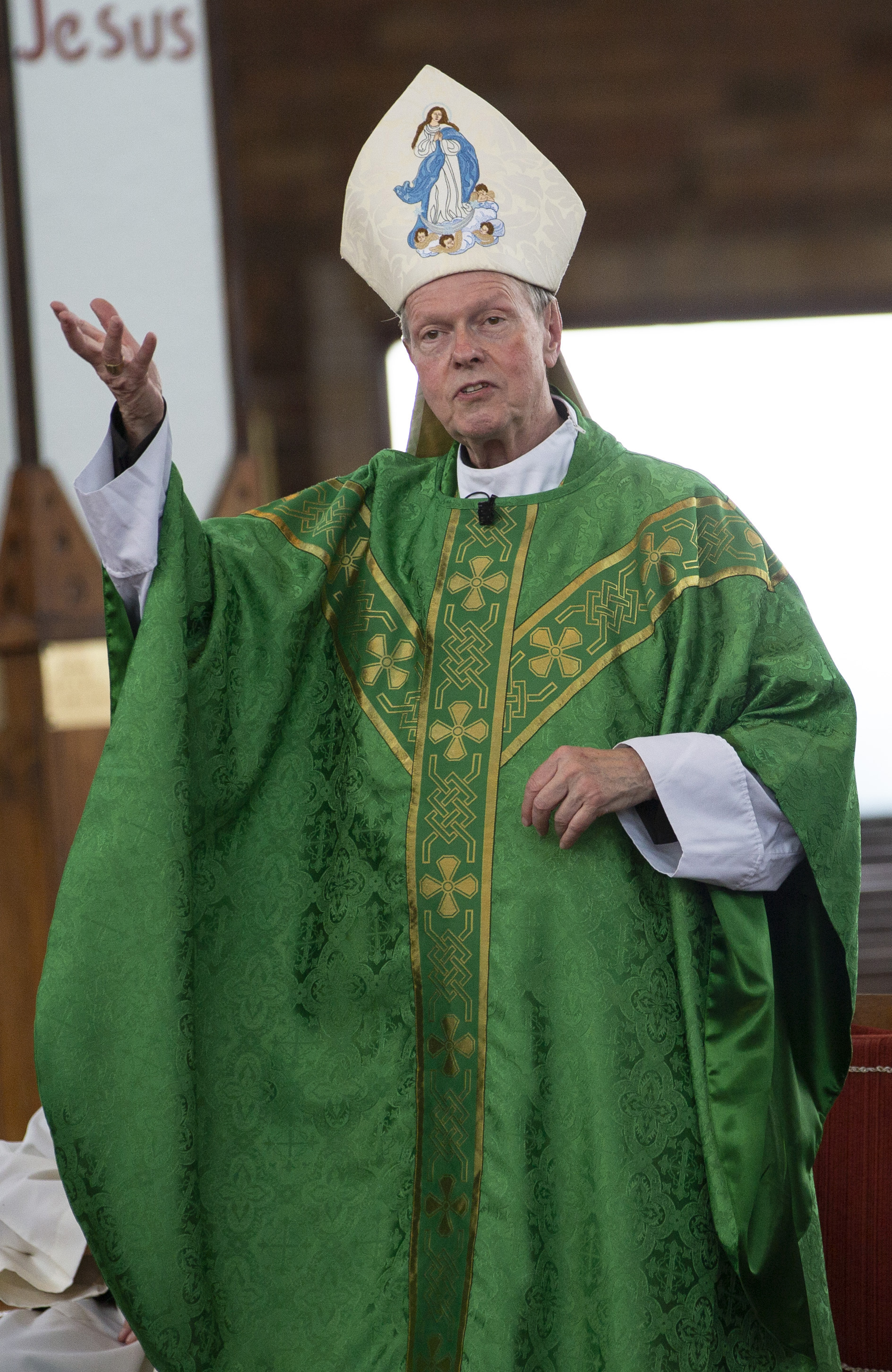March 22, 2023 at 9:34 a.m.
Which dioceses have filed for Chapter 11?
Cardinal Robert McElroy announced last month that the San Diego Diocese — which has 96 parishes that serve nearly 1.4 million Catholics — may have to resort to a declaration of bankruptcy in 2023 to manage the cost of hundreds of new abuse claims. And just last week, the Diocese of Santa Rosa (Calif.) and the Diocese of Albany both declared bankruptcy.
At issue, McElroy said, is a mounting number of abuse claims filed under a three-year window opened by California’s governor, which began in 2020 and expired on Dec. 31, 2022. Some of the new abuse claims brought to the diocese date back 75 years, the cardinal wrote.
More than two dozen U.S. dioceses, including two in U.S. overseas territories, have entered into bankruptcy proceedings, the vast majority in the past decade. Of those dioceses, 13 are in the midst of the proceedings as of February 2023, while 15 have completed the process.
Many dioceses have cited the high cost of settling abuse claims as a major factor in the decision to declare bankruptcy.
The dioceses currently in the midst of bankruptcy proceedings are Albany, Agaña (Guam), Buffalo, Camden, Harrisburg, New Orleans, Norwich, Rochester, Rockville Centre, San Juan (Puerto Rico), Santa Fe, Santa Rosa and Syracuse.
The dioceses that have completed their bankruptcy proceedings are Davenport, Duluth, Fairbanks, Gallup, Great Falls-Billings, Helena, Milwaukee, New Ulm, Portland in Oregon, St. Paul and Minneapolis, Spokane, Stockton, Tucson, Wilmington, and Winona-Rochester.
Law professor Marie T. Reilly, in conjunction with The Catholic Project at The Catholic University of America (catholicproject.catholic.edu), has tracked all the U.S. dioceses that have declared bankruptcy. Reilly told CNA that in several of the 24 U.S. states and three territories that have temporarily “revived” the statute of limitations on claims of abuse, multiple Catholic dioceses have been forced to declare bankruptcy amid a mounting number of new abuse claims brought to light during the statute of limitations “revival windows.”
In New York, which opened a two-year window for old abuse claims to be filed in August 2019, five of the state’s eight dioceses have declared bankruptcy, all since 2019. In Minnesota, four of the state’s six dioceses have declared bankruptcy following the opening of a three-year window from 2013-16.
California was the first state to enact a temporary revival window after 2002, according to a report from Child USA, a think tank that focuses on child protection. Since then, 18 more states — Delaware, Hawaii, Minnesota, Georgia, Utah, Michigan, New York, Montana, New Jersey, Arizona, Vermont, North Carolina, Kentucky, Arkansas, Nevada, Louisiana, Maine, and Colorado; and three territories — Guam, Washington, D.C., and Northern Mariana Islands — have opened windows. Most have been two to three years long.
Some states — including Maine and Vermont — have opened “permanent windows” on their statutes of limitations to allow alleged victims to bring claims forward no matter when the alleged abuse occurred.
Jonah McKeown is a writer for Catholic News Agency.
- Amid ‘fragile’ ceasefire, Caritas Jerusalem seeks to ‘replant hope’ in Gaza this Christmas
- Full text: Pope Leo XIV’s Dec. 17, 2025 general audience
- Pope, Israeli president speak by phone about Sydney attack, peace in Gaza
- ‘Make more use of Newman,’ say British church experts
- Rather than chasing productivity, turn to God to resolve restlessness, pope says
- Pope Leo names Bishop Ramón Bejarano to lead Diocese of Monterey
- Honor is ‘bigger than me,’ Heisman winner, a Catholic, says in emotional acceptance speech
- Illinois Catholic bishops back pregnancy centers’ suit over law requiring abortion referrals
- Haitian Catholics persevere with faith, courage amid adversity in US and in troubled homeland
- Attending school Christmas concert, pope thanks children for sharing love








Comments:
You must login to comment.